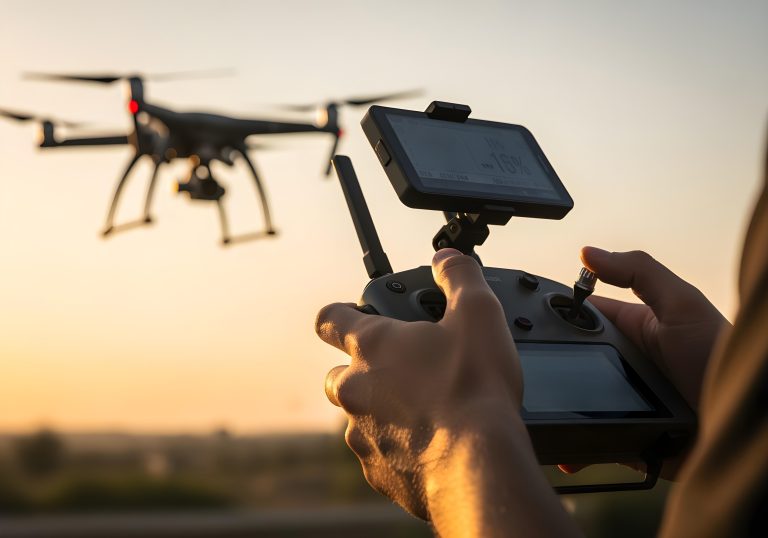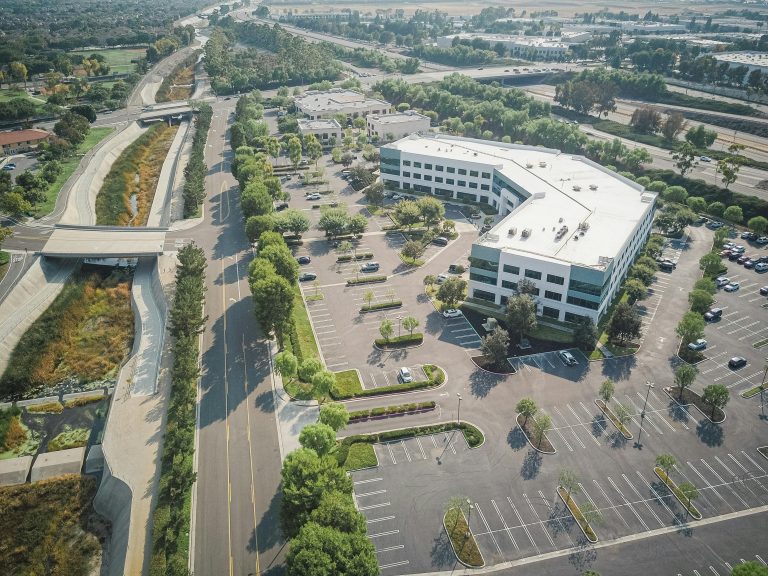Boost Efficiency with Drone Services for Building Inspection
You’ve seen them perched on ladders, strapped into harnesses, or slowly rising in a scissor lift. Traditional building inspections have always felt a bit risky. They move slowly, cost a bundle, and put folks in danger. But what if you could get a better, more detailed look at your building’s health without anyone ever leaving the ground? That is where professional drone services for building inspection come in, completely changing how we approach property maintenance and asset management. Drones doing inspections? That’s not some passing fad. It’s actually a complete overhaul, making operations much sharper, safer for everyone, and incredibly productive.
Why Drones are Changing Building Inspections for Good
The move away from clipboards and binoculars was long overdue. Drones give you quick, safe work and excellent information. You’ll empower your project managers and construction crews to decide with confidence, backed by hard facts, not just gut feelings.
A Huge Leap in Safety
Let’s be blunt: sending people up on roofs, scaffolding, or cranes is dangerous. The risk of falls is always present, no matter how many safety protocols you have in place. Sadly, falls kill many construction workers, a consistent danger OSHA points out.
Drones remove this human risk almost entirely. Drone operators stay completely safe on the ground, letting the aircraft tackle all the difficult areas like steep rooftops, tall building fronts, and intricate industrial gear.
We’re not just talking about huge disasters here. Even small scrapes and sprains can cost a lot in missed workdays and bigger bills from the insurance company.
Slashing Costs and Saving Time
Time is money, and traditional inspections eat up a lot of both. You have to account for setting up and taking down scaffolding, renting aerial lifts, and paying for the labor hours of multiple inspectors. A data drone can be deployed in minutes and can cover large areas in a fraction of the project time.
Things move quickly, so your business keeps running without a hitch. There is no need to block off large areas for safety zones or shut down operations for an extended period. We get your inspection done fast and right, so you can jump back into your day.
Getting Better, More Detailed Data
A human inspector can only see so much. A drone equipped with a high-resolution camera, however, can capture incredibly detailed aerial images that can be zoomed in on later for close analysis. You can spot tiny cracks, failing seals, or rust spots that would be invisible from a distance.
But we do so much more than simple drone pictures. Drones often fly with smart sensors, like thermal cameras, that can easily find where heat escapes or water leaks into structures. Using LiDAR scanners, they build super detailed digital copies of your building. You get a complete rundown of your asset’s health right from this digital information. That makes it easy to decide which fixes matter most and what steps to take next for its longevity.
Curious What Tasks Drone Inspection Services Handle?
Here are some of the most common types of inspections you will come across.
Roof Inspections
Commercial roofs, especially in New England, take a beating from snow, ice, and harsh weather. A drone roof inspection can quickly identify potential problems like damaged flashing, clogged drains, water pooling, or compromised membranes. A drone equipped with a thermal camera can even see moisture trapped beneath the roof’s surface, a sign of a leak that’s invisible to the naked eye.
You’ll spot minor issues early. That stops them from becoming huge, expensive problems like water damage or sudden repairs. Regular drone flyovers can be part of a robust preventative maintenance plan. Property management businesses looking after a high number of large commercial buildings will find this particularly handy.
Façade and Envelope Assessments
The building envelope is the physical barrier between the outside and the inside environment. Cold drafts, unwanted water, and huge energy bills are all signs your building’s outer shell isn’t holding up anymore. Drones make checking tall building exteriors simple, letting us skip those expensive hanging platforms.
You can easily spot crumbling concrete, weak mortar, or wall cracks with these clear pictures. Infrared scans really help out. Imagine finding exactly where heat escapes from your home, like around drafty windows or leaky doors. You’ll quickly boost your building’s energy savings and watch those utility bills shrink.
Infrastructure and Utility Checks
The usefulness of drones extends beyond the main building structure. You can use them to check on vital support systems. These are often places that are hard or unsafe to get into. You’ll find essential structures: cell towers, bridges spanning rivers, power lines bringing electricity, and giant wind turbines.
Drones can safely fly close to these structures to look for signs of wear, corrosion, or structural damage. Regularly checking equipment helps power and gas companies keep their services running safely and without interruption. Forget about sending workers on risky climbs. You also won’t pay for expensive helicopter flyovers.
Using drones to inspect bridges completely changes civil engineering work. A drone bridge assessment can get close to hard-to-reach undersections and high support beams, places that would typically require lane closures and specialized lift equipment. Drones fly around, snapping super-sharp photos that quickly reveal any cracks, concrete spalling, or rust.
You can check a bridge for cracks without going near it! Overhead photos let engineers spot problems safely, keeping people out of harm’s way. Imagine taking all that data and turning it into a super detailed 3D model – basically, a living digital twin of the bridge! You’ll find it much simpler to spot any shifts as time goes on, which really helps you schedule upkeep smarter.
Tank Inspections
Large storage tank inspections, whether for water, oil, or chemicals, pose significant safety challenges. Using drones for tank inspections eliminates the need for personnel to enter confined spaces or work at height. Drones can inspect both the interior and exterior of tanks for signs of corrosion, weld failures, or coating damage.
Power Lines and Solar Panels
Utility companies use drones to inspect power lines and transmission towers over vast and often remote terrains. Drones equipped with thermal cameras can quickly identify overheating components, which are a sign of imminent failure. When we tackle problems before they start, you experience fewer blackouts, and the whole power network becomes more stable for everyone.
Similarly, drones are extremely efficient for solar panel inspections on large solar farms. A thermal imaging drone can fly over thousands of solar panels and pinpoint defective cells or panels that are not performing optimally. Gathering this information happens much faster than any human could, letting us make more power.
Construction Site Monitoring
On an active construction site, a construction drone provides invaluable oversight for project managers. A construction drone can conduct regular flyovers to track construction progress against the project schedule. Everyone involved gets a quick, current look at what’s happening on the job site.
Streamlining Communication and Collaboration
One of the less obvious ways drones provide value is by how they improve communication among project teams. High-resolution aerial photos and shareable 3D models act as a single source of truth for everyone involved. Architects, engineers, builders, and clients all look at the exact same information, cutting way down on any confusion.
Seeing the same visuals helps everyone talk clearly and make choices much faster. Instead of describing an issue over the phone, a project manager can share an annotated drone photo that clearly highlights the problem area.
Your Guide to Drone Services for Building Inspection
So, you are interested in using drone services for your next inspection. What’s the plan? Here’s what to expect.
The Technology Behind the Flight
Professional drone service providers use advanced equipment built for commercial use. This includes inspections drones with stable flight characteristics and fail-safe features. The most important part, however, is what the drone is carrying.
Picture this: high-resolution cameras capturing every detail. Then there are thermal cameras, which spot changes in heat, and even LiDAR sensors for mapping difficult areas. LiDAR uses laser pulses to measure distances, which is used to create incredibly precise 3D point clouds and models of a structure. The technology used depends entirely on the goals of the inspection and the kind of data capture required.
What Happens During an Inspection?
A professional drone inspection follows a clear workflow. First, the pilot will create a detailed flight plan that maps out the route the drone will take to collect data safely. This also involves checking airspace restrictions and getting any needed permissions from the Federal Aviation Administration (FAA).
Next is the onsite data collection, where the pilot executes the pre-programmed flight. They will monitor the feed in real time to make sure all important details are being recorded. After the flight, which has optimal flight times for efficiency, the raw aerial imagery is processed using specialized software to stitch images together, analyze thermal readings, or build 3D models.
Understanding the Final Report
The end result is not just a folder full of drone photos. A good company gives you a full report packed with information. It might have pictures, clearly marked to highlight areas needing your attention. You’ll also get thermal maps that visually explain exactly where energy is being wasted. And of course, a full rundown of our findings, complete with our suggestions, will wrap things up.
For those bigger jobs, you could get a full, interactive 3D model of your building. You’ll practically walk through it on your screen! This lets you explore the property virtually and examine any part of it in close detail from your desk. Armed with these facts, you’ll feel confident making smart calls on what to fix and how to keep things running smoothly.
Conclusion
The old ways of inspecting buildings are becoming obsolete. They are too slow, too costly, and far too dangerous. Imagine buildings that practically manage themselves and handle their own upkeep.
That’s where smart technology is taking property management right now. Imagine inspecting buildings without dangerous climbs or long waits.
Drones let you do just that, giving you quick, safe checks and incredibly precise details no one thought possible.
For business owners in Massachusetts, Maine, and New Hampshire who want to protect their investments and operate more efficiently, adopting professional drone services is not just a smart choice; it is a necessary one.






